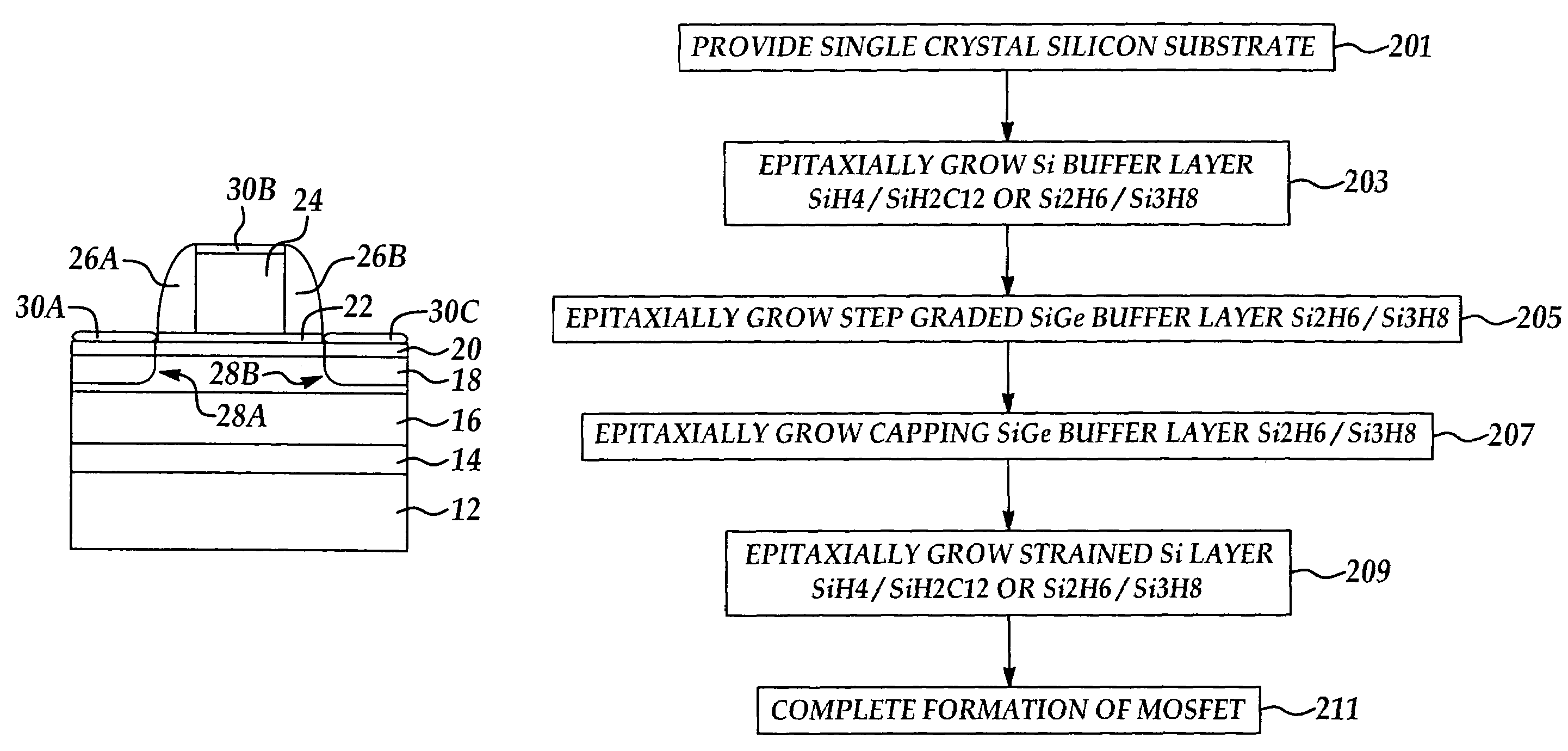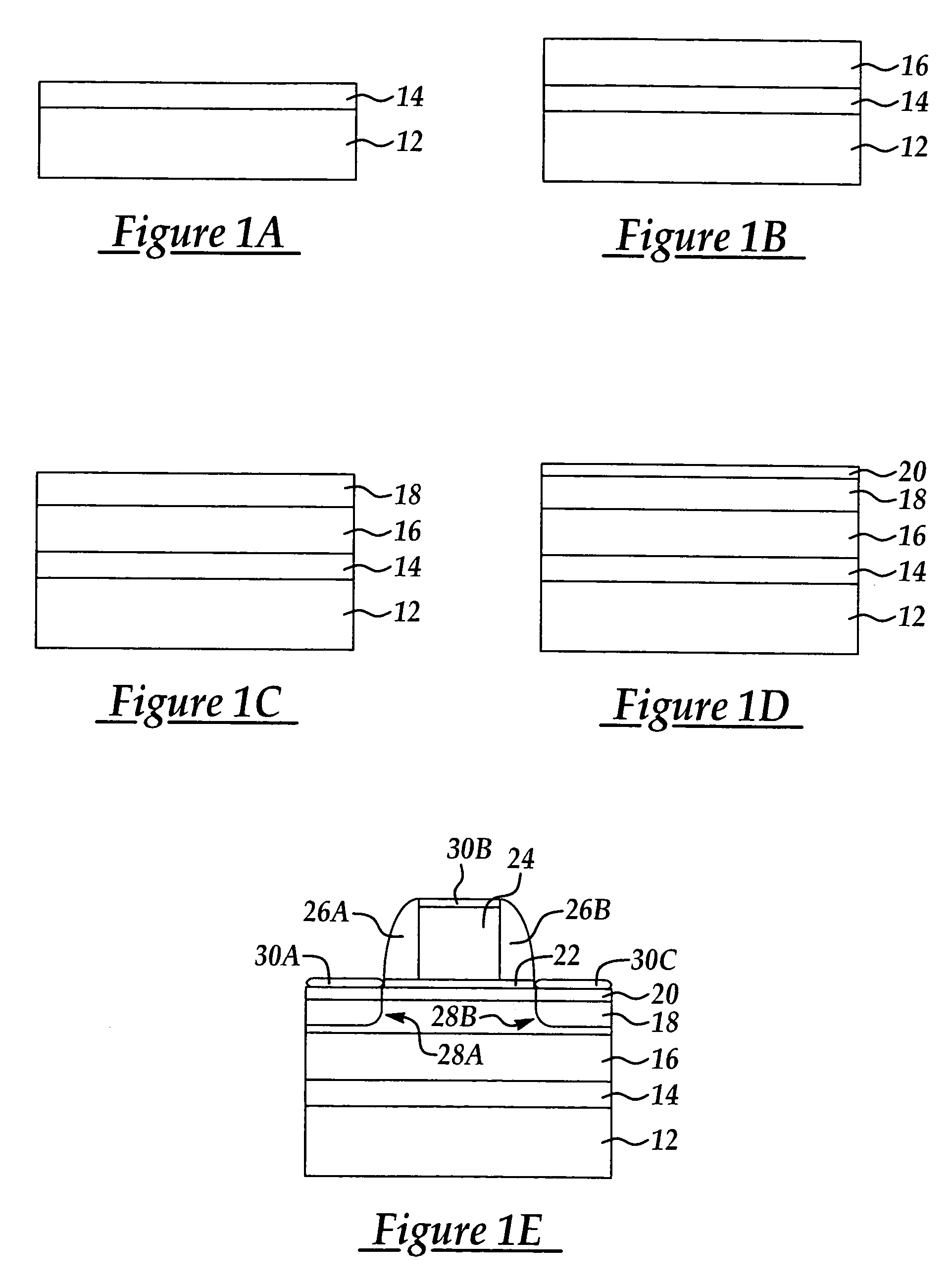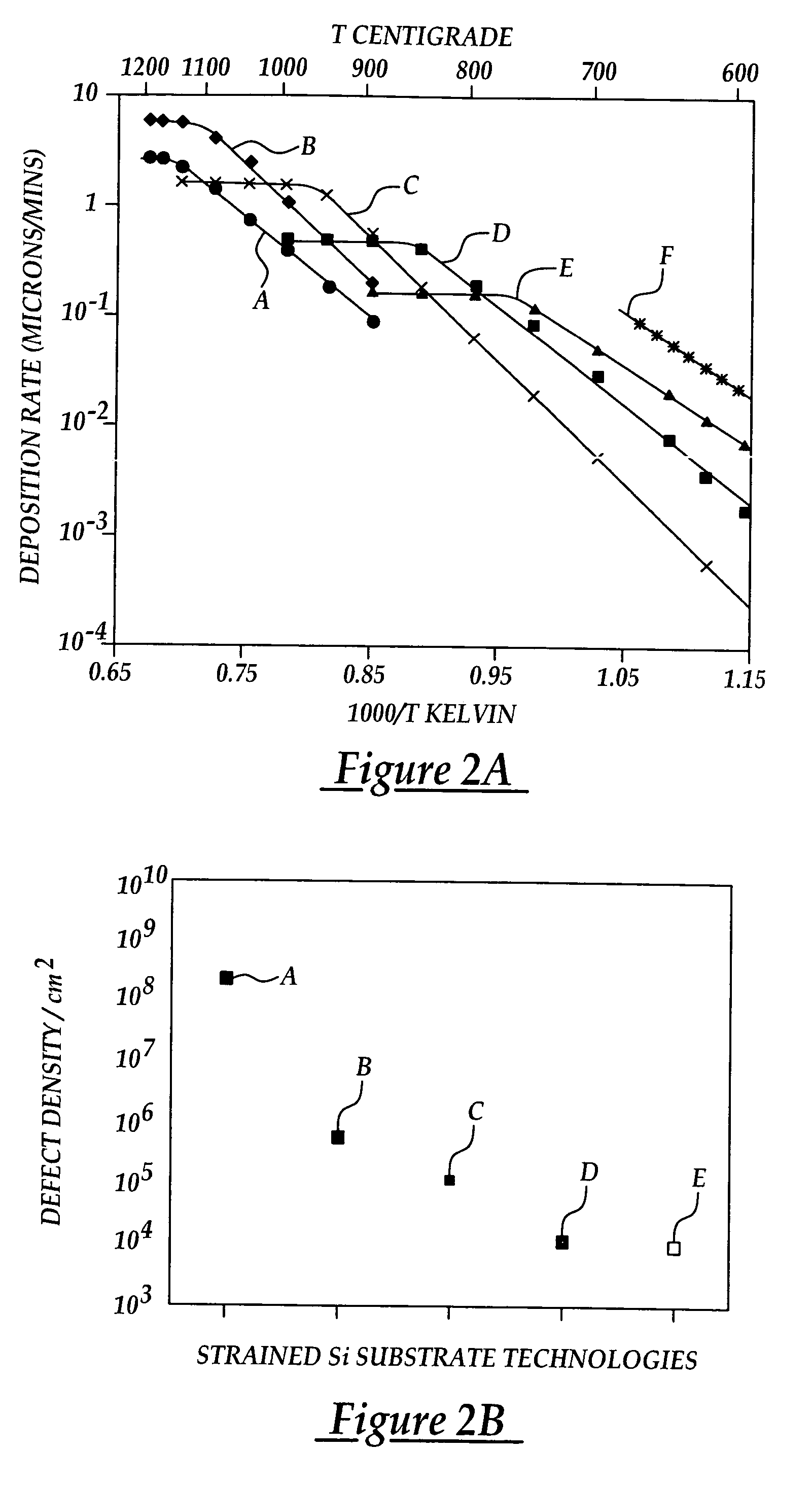Method for producing low defect density strained -Si channel MOSFETS
a technology of strained silicon channel mosfet and strained silicon channel, which is applied in the direction of basic electric elements, electrical apparatus, and semiconductor devices, can solve the problems of low-throughput processes which have been economically prohibitive, devices that require complex manufacturing processes which are generally incompatible with cmos manufacturing technology, and require complex manufacturing processes. achieve the effect of improving wafer throughput and low defect density
- Summary
- Abstract
- Description
- Claims
- Application Information
AI Technical Summary
Benefits of technology
Problems solved by technology
Method used
Image
Examples
Embodiment Construction
[0016]Although the method of the present invention is explained with reference to a particular strained-Si channel MOFSET device, it will be appreciated that the method of the present invention may be applied to the formation of any semiconductor device where a strained silicon channel may be advantageously formed to provide improved electrical properties.
[0017]Referring to FIG. 1A–1E, in an exemplary embodiment of the method of the present invention, are shown cross-sectional schematic views of a portion of a semiconductor wafer at stages in production of an exemplary strained-Si channel N-MOFSET device.
[0018]Referring to FIG. 1A, a substrate (silicon wafer) 12 formed of single crystalline silicon is provided, for example p-type with a (100) lattice orientation. Prior to subsequent epitaxial growth of an overlying silicon buffer layer, the process wafer is preferably cleaned, including removing native oxides from the process surface by contacting the process surface, for example by...
PUM
| Property | Measurement | Unit |
|---|---|---|
| temperature | aaaaa | aaaaa |
| temperature | aaaaa | aaaaa |
| thick | aaaaa | aaaaa |
Abstract
Description
Claims
Application Information
 Login to View More
Login to View More - R&D
- Intellectual Property
- Life Sciences
- Materials
- Tech Scout
- Unparalleled Data Quality
- Higher Quality Content
- 60% Fewer Hallucinations
Browse by: Latest US Patents, China's latest patents, Technical Efficacy Thesaurus, Application Domain, Technology Topic, Popular Technical Reports.
© 2025 PatSnap. All rights reserved.Legal|Privacy policy|Modern Slavery Act Transparency Statement|Sitemap|About US| Contact US: help@patsnap.com



